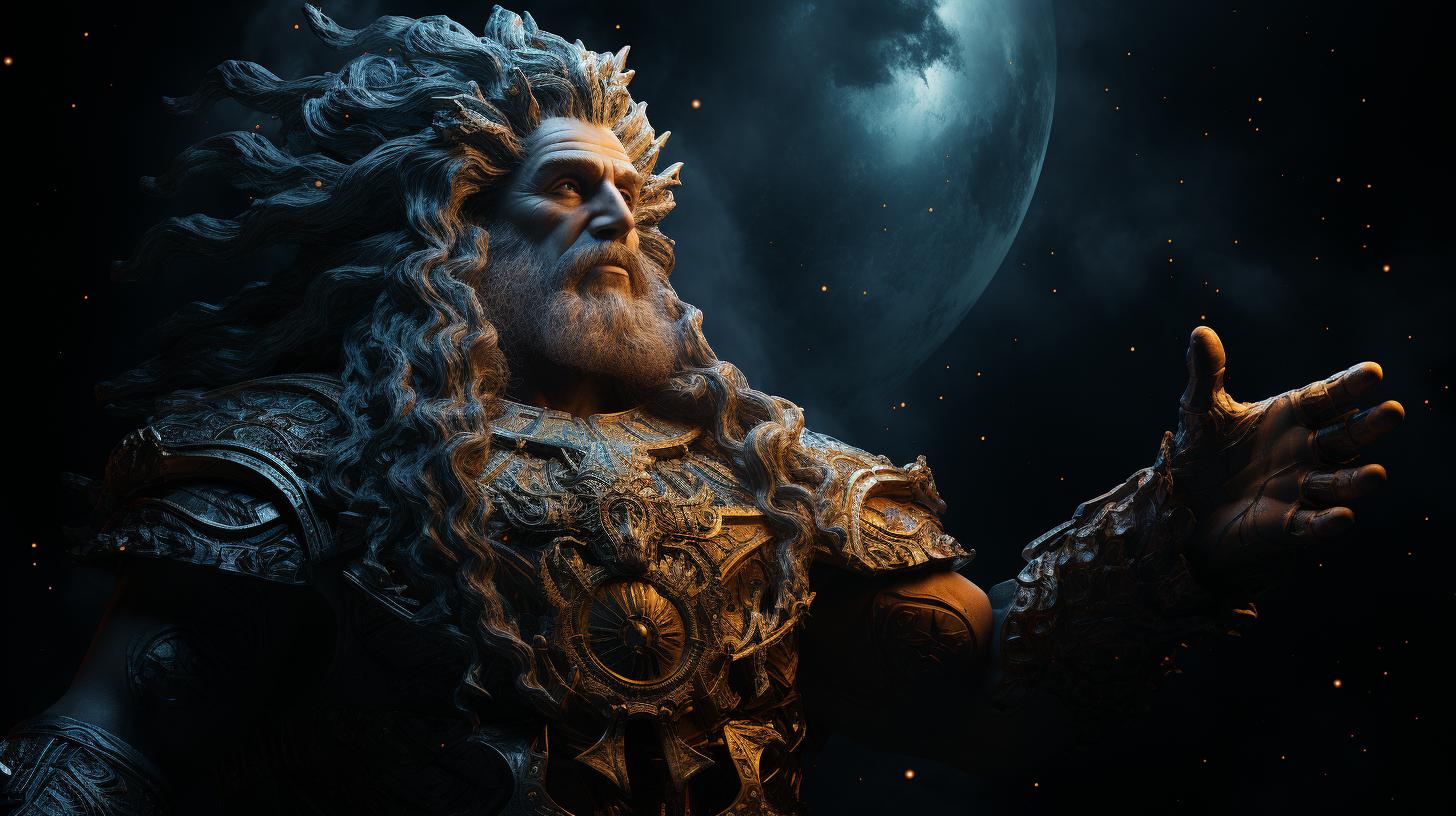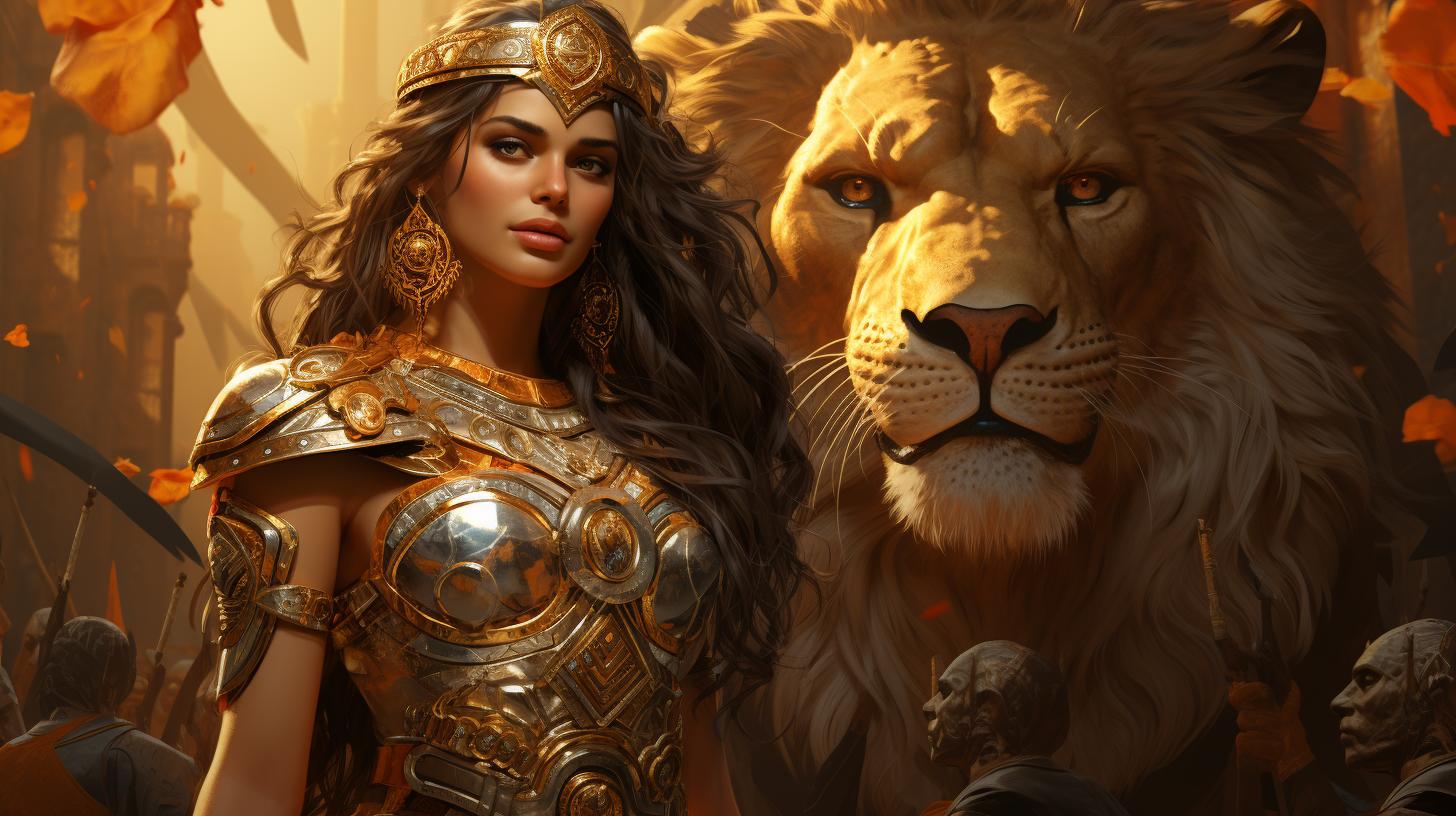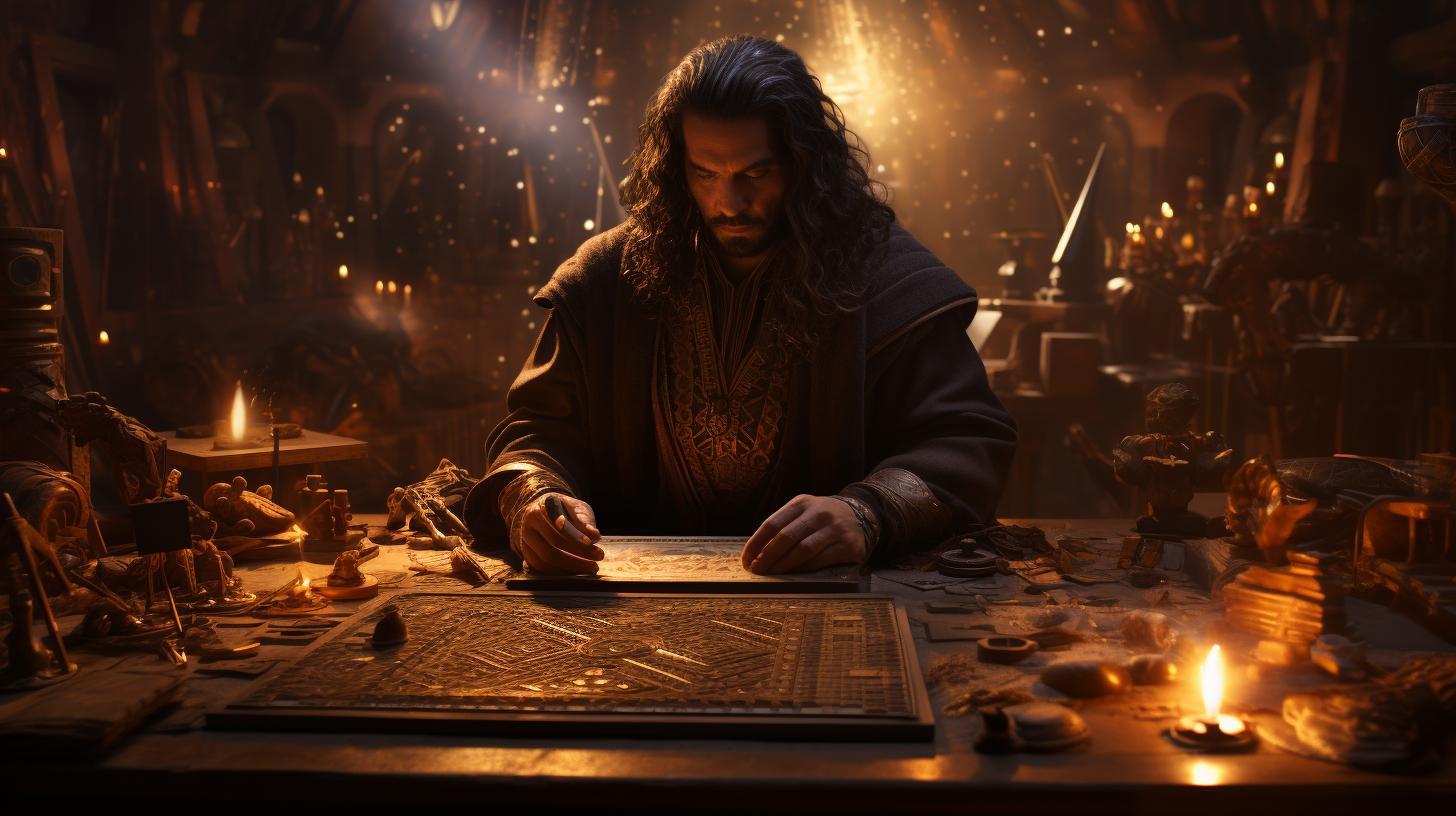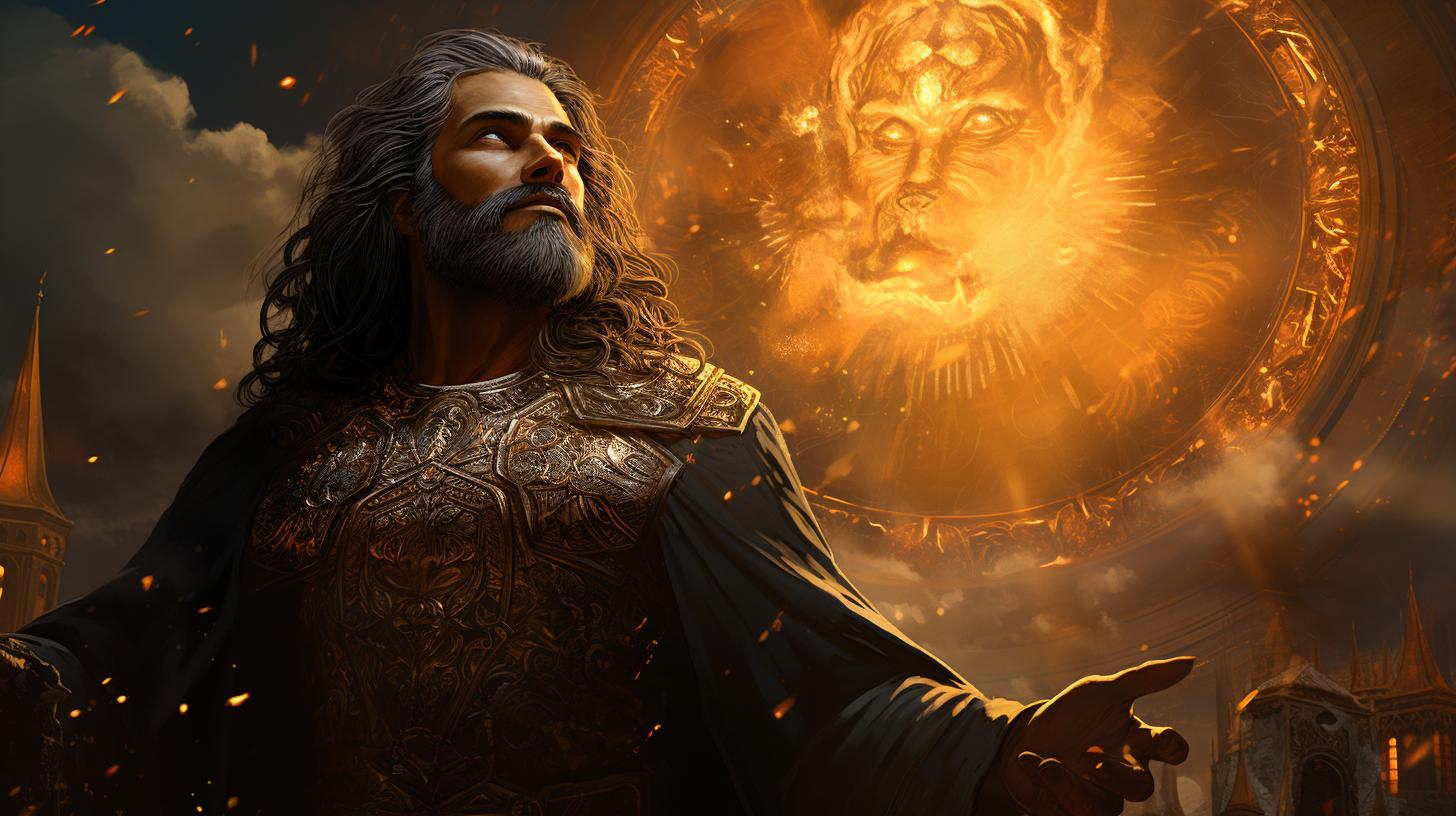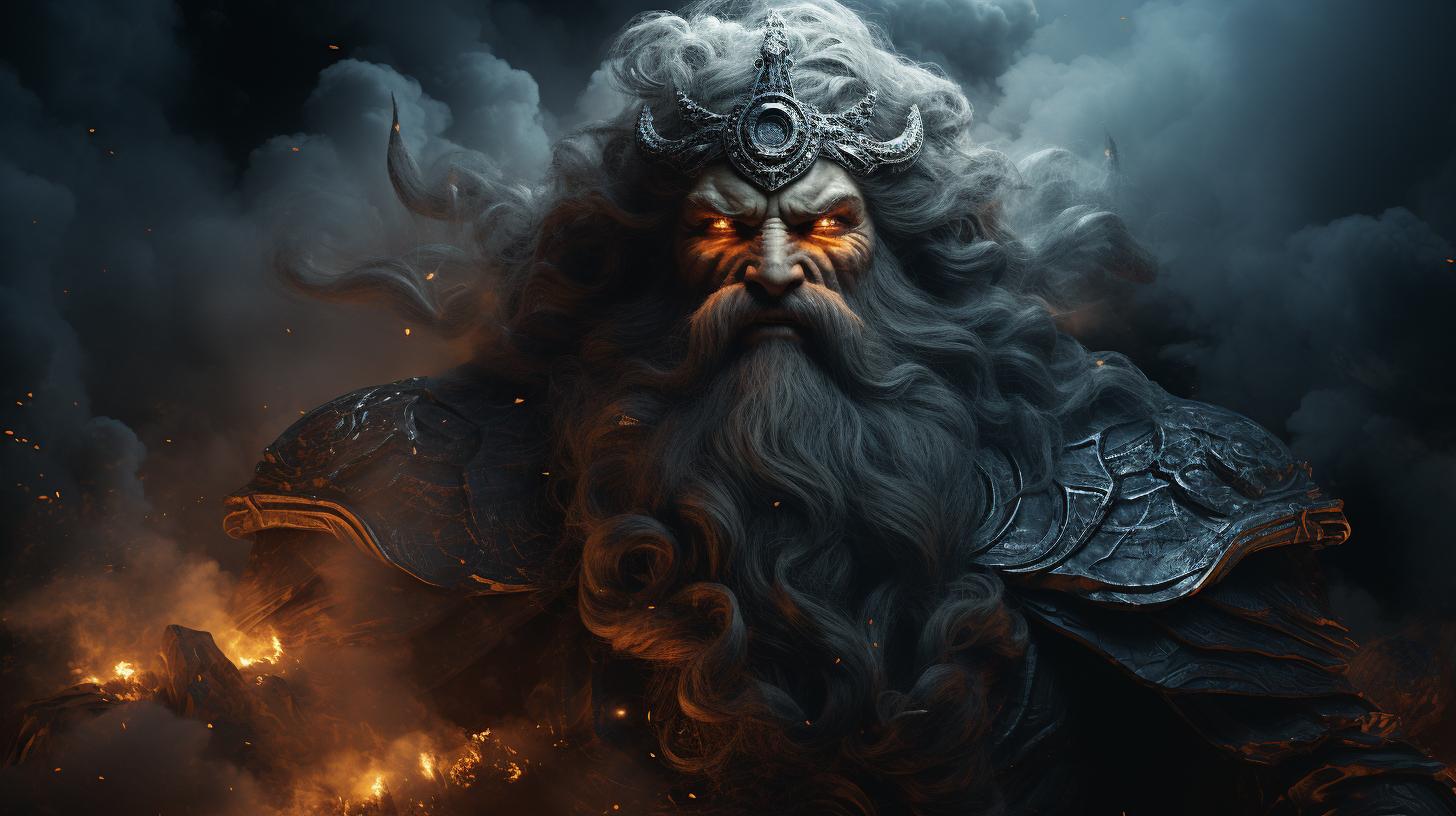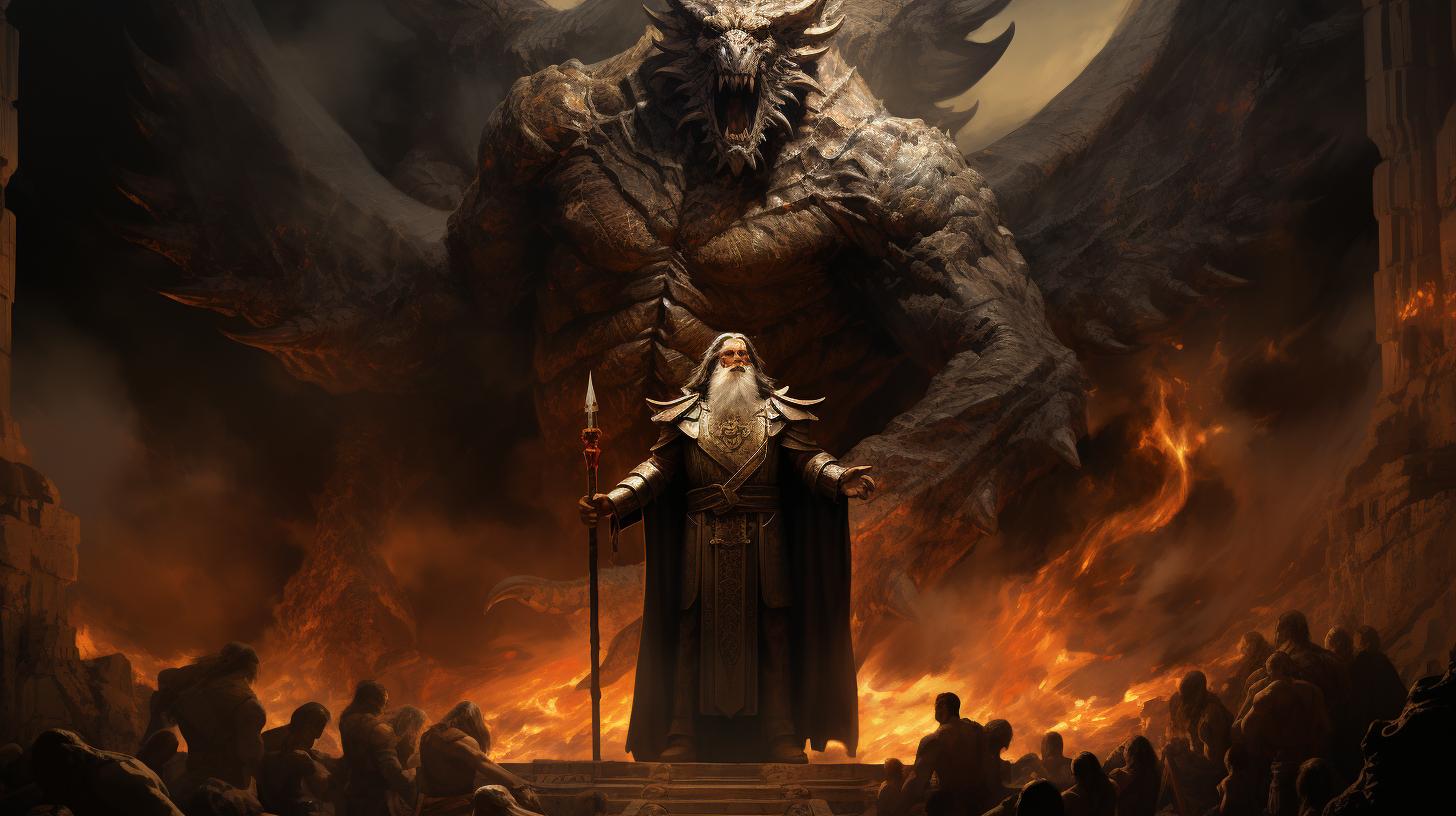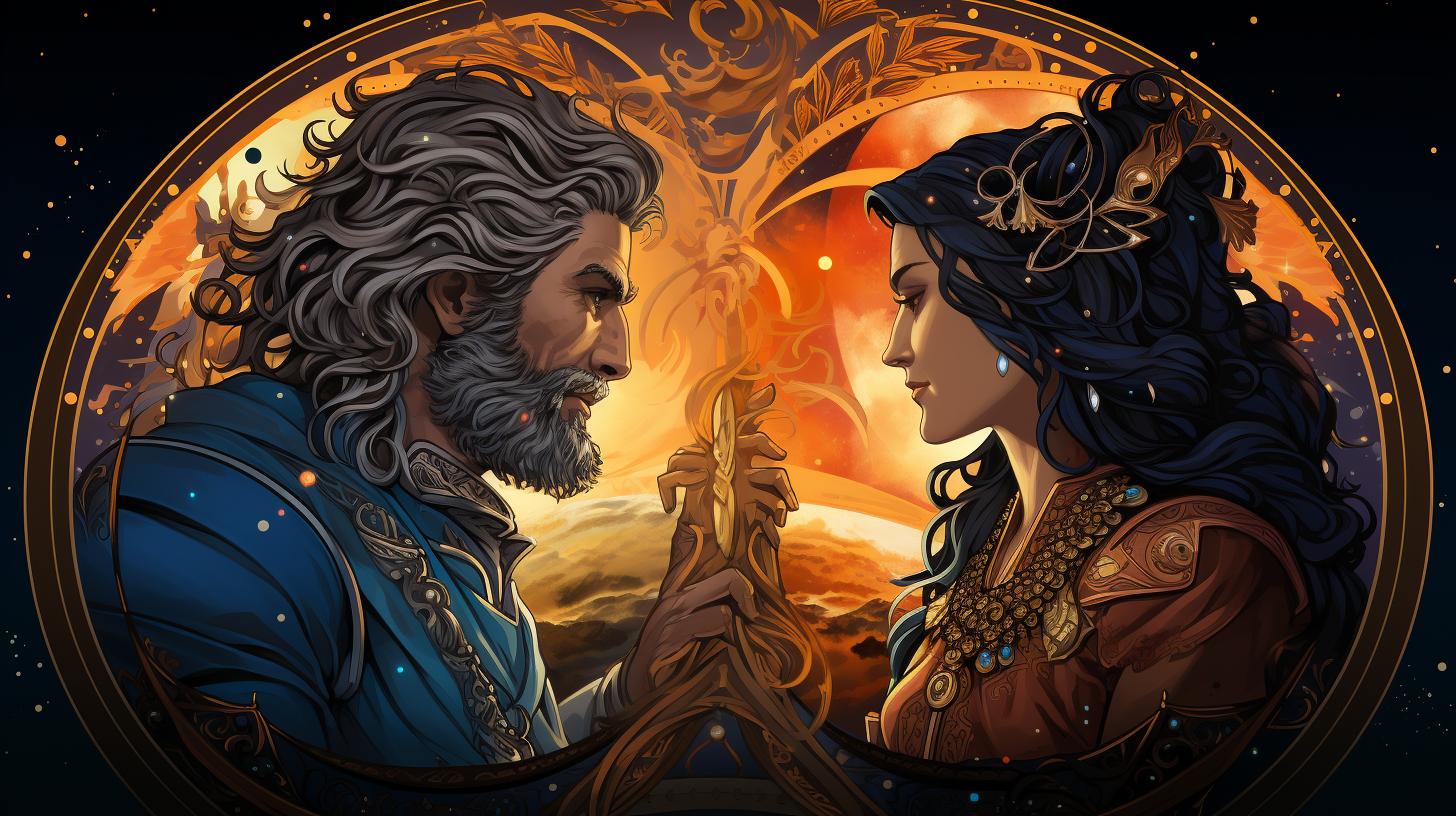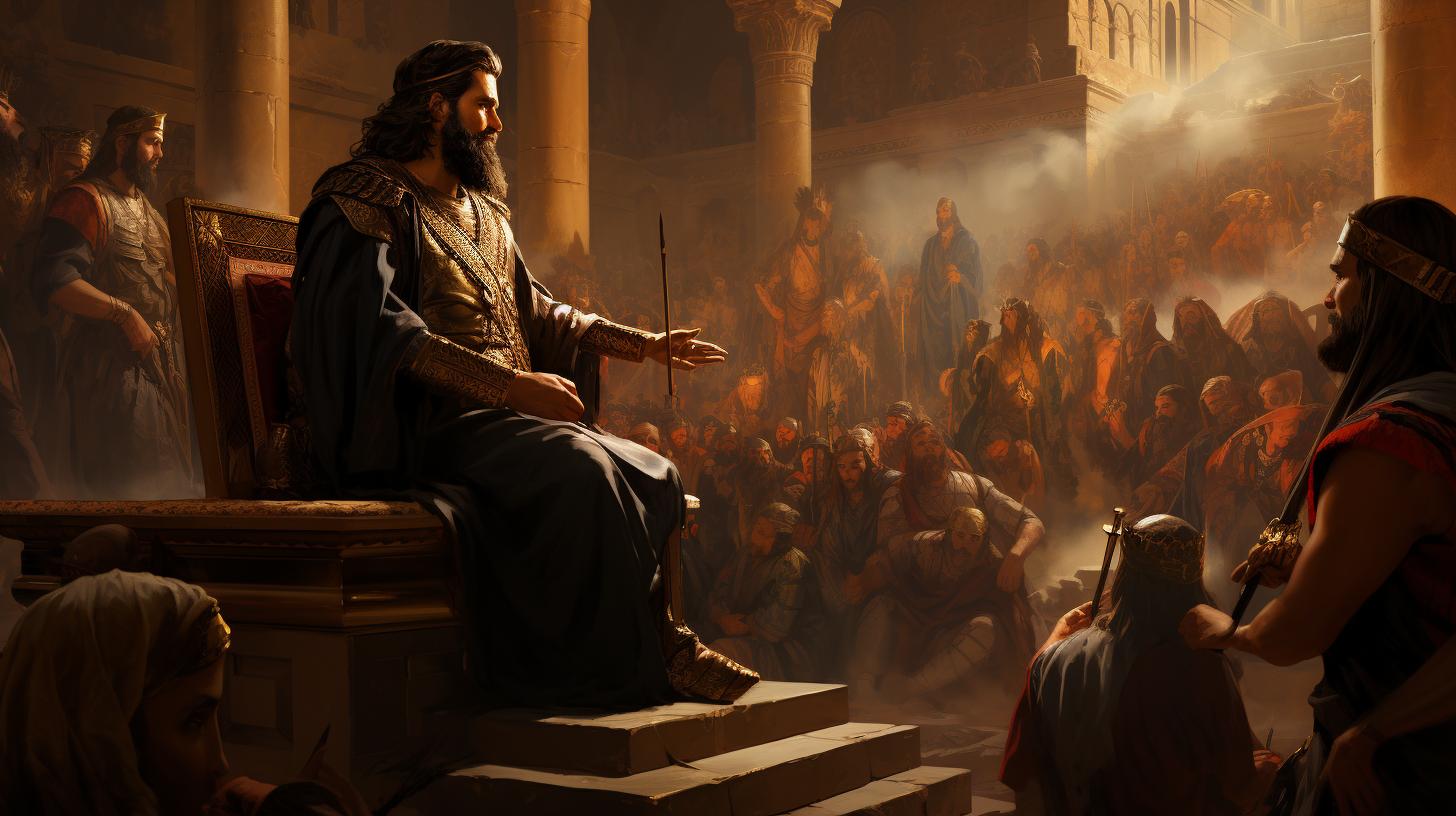Sin the Moon God: Exploring the Mesopotamian Deity and His Influence

Sin the Moon God, also known as Nanna, is a prominent deity in Mesopotamian mythology. He is closely associated with lunar symbolism and is considered the father of Shamash, the sun god, and sometimes even Ishtar, the goddess of Venus. Sin’s representation has evolved over time, transitioning from a bull or a boat to that of a pastoral caretaker or sailor.
His worship was widespread in cities such as Babylon, Uruk, and Nippur. While his cult eventually declined, Sin’s influence remained, leaving a legacy that extends beyond Mesopotamia. This article explores the origins, worship, mythology, and legacy of Sin the Moon God.
Sin the Moon God: Exploring the Mesopotamian Deity
In this section, we delve into the fascinating world of Sin, the Moon God, and uncover the various aspects of this ancient Mesopotamian deity. From his origins and history to his representation and symbolism as the Moon God, we explore the unique traits that make Sin a central figure in Mesopotamian mythology.
Additionally, we examine Sin’s relationships with other gods and goddesses of this ancient pantheon.
Origins and History of Sin
Unraveling the origins of Sin provides us with a glimpse into the ancient Mesopotamian civilization and their beliefs surrounding lunar divinity. We explore the historical context in which Sin emerged as a prominent deity and trace the development of his worship over time.
Discover the stories and legends that shaped Sin’s narrative and solidified his place in the religious beliefs of the ancient Mesopotamians.
Representation and Symbolism of Sin as the Moon God
Examining the representation and symbolism of Sin offers insights into the cultural significance of this lunar deity. We investigate the various forms in which Sin was depicted, from a bull or boat to a caretaker or sailor.
Moreover, we analyze the powerful symbolism behind Sin’s crescent lunar symbol and its connection with fertility, prosperity, and control over dairy production. By understanding how Sin was visually represented, we gain a deeper understanding of the Mesopotamians’ perception of the Moon God and his role in their society.
Sin’s Relationship with Other Mesopotamian Gods and Goddesses
As we explore Sin’s relationships with other gods and goddesses of Mesopotamian mythology, we uncover the intricate webs of divine interactions and familial connections. We delve into the parentage of Sin as the father of Shamash, the god of the sun, and Ishtar, the goddess of Venus. Through the exploration of these relationships, we gain insights into the hierarchical structure of the Mesopotamian pantheon and the intricate dynamics between the divine entities worshipped by this ancient civilization.
Worship and Cult of Sin in Ancient Mesopotamia
Worship and cult practices surrounding Sin the Moon God were essential components of ancient Mesopotamian society. The rituals and ceremonies dedicated to Sin, as well as the temples and cities associated with his worship, held great significance.
Rituals and Ceremonies Dedicated to Sin
The worshippers of Sin engaged in various rituals and ceremonies to honor the moon god. These practices involved offerings, chants, and prayers to seek Sin’s favor and blessings. During specific lunar phases, special rituals were performed, aligning with the changing lunar calendar.
These rituals aimed to invoke Sin’s powers of fertility, prosperity, and protection over the herds and pastoral activities of the people.
Temples and Cities Associated with Sin’s Worship
Temples dedicated to Sin were constructed in prominent cities across ancient Mesopotamia. One such notable temple was the E-kur, located in the city of Nippur. This temple served as the primary religious center for the worship of Sin and attracted devoted followers from far and wide.
Other cities, including Babylon, Uruk, and Harran, also housed temples and sanctuaries where Sin was venerated.
Nabonidus and the Cult of Sin: Attempts to Elevate His Status
Nabonidus, the last king of Babylon, played a significant role in the promotion and elevation of Sin within the pantheon of gods. He aimed to emphasize the supreme status of Sin and actively supported the moon god’s worship.
Nabonidus renovated and enhanced existing temples dedicated to Sin, seeking to solidify his position as a pious ruler. His efforts reflected the continuous reverence and importance placed on Sin’s cult throughout the ancient Mesopotamian civilization.
- Offerings, chants, and prayers were integral parts of the rituals dedicated to Sin.
- Special rituals aligned with the lunar calendar were performed to invoke Sin’s blessings.
- The E-kur temple in Nippur was a prominent religious center for Sin’s worship.
- Temples dedicated to Sin were also found in cities such as Babylon, Uruk, and Harran.
- Nabonidus, the last king of Babylon, supported and enhanced the cult of Sin.
Sin in Mythology and Literature
As a prominent deity in Mesopotamian mythos, Sin played various roles in the rich tapestry of ancient stories and epics.
Let us delve deeper into his significance and influence.
Sin’s Role in Mesopotamian Myths and Epics
Sin took center stage in numerous myths and epics within Mesopotamian culture. He was often portrayed as a wise and powerful god, symbolizing the moon’s gentle light and its connection to the earthly realm.
In these narratives, Sin’s presence played a crucial role in shaping the destiny of both mortals and divine beings.
- Sin’s involvement in the epic of Gilgamesh showcased his influence on quests for immortality, as the moon god guided the hero in his search for eternal life.
- In the myth of Inanna’s Descent into the Underworld, Sin was an integral part of the narrative, providing assistance and counsel to his daughter Ishtar during her perilous journey in the realm of the dead.
- Another significant myth featuring Sin was the tale of the exalted hero Etana, where the moon god aided him in his quest for kingship and prosperity.
Sin and His Family: Ishtar and Shamash
Within the divine hierarchy, Sin’s family connections held great significance in Mesopotamian belief systems.
Ishtar, the goddess of love, fertility, and war, was often identified as Sin’s daughter in certain mythologies. Their relationship highlighted the interconnectedness of celestial bodies, as well as the lunar influence on Ishtar’s divine attributes.
Shamash, the powerful sun god, was portrayed as Sin’s son in Mesopotamian cosmology. Together, they represented the divine balance between day and night, light and darkness.
Sin’s Influence on Mesopotamian Culture and Beliefs
Sin’s impact extended beyond myths and epics, permeating various aspects of everyday life in ancient Mesopotamia.
His lunar symbolism played a crucial role in shaping cultural beliefs and practices.
- Sin’s association with fertility and prosperity led to his veneration by shepherds and herders, as they believed his blessings ensured abundant livestock and dairy production.
- During religious festivals and rituals, Sin’s worshippers would offer tributes and perform ceremonies dedicated to the moon god, seeking his continued favor and protection.
- Artistic representations of Sin, with his distinctive crescent moon headdress, adorned temples and other religious structures, showcasing his prominence in the spiritual and artistic expressions of the time.
Sin’s influence on Mesopotamian culture was profound, permeating both the spiritual and practical aspects of society, shaping beliefs, rituals, and artistic expressions for generations to come.
The Decline of Sin’s Worship and Legacy
The worship of Sin the moon god, once prevalent in ancient Mesopotamia, gradually declined over time, influenced by various factors. This section explores the factors leading to the decline of Sin’s cult and examines his influence on other ancient cultures and religions.
Factors Leading to the Decline of Sin’s Cult
Several factors contributed to the decline of Sin’s worship in Mesopotamia.
- Social Changes: As societal structures shifted and evolved, the significance of Sin as a lunar deity diminished. New deities rose to prominence, altering the religious landscape.
- Cultural Influences: The conquests and assimilation of different civilizations brought about cultural exchanges, leading to the syncretism of gods and the merging of religious practices, which marginalized the worship of specific deities like Sin.
- Religious Reforms: Periodic religious reforms within Mesopotamia aimed to streamline and consolidate worship, often relegating certain gods to secondary positions.
Sin, as a result, lost prominence in the state-sanctioned pantheon.
Sin’s Influence on Other Ancient Cultures and Religions
The influence of Sin the moon god extended beyond the borders of Mesopotamia, impacting other ancient cultures and religions.
- Adoption of Lunar Symbolism: Sin’s association with the moon and his symbolism transcended regional boundaries and became incorporated into the religious practices of neighboring civilizations.
- Assimilation in Other Pantheons: As cultures intermingled, deities were often assimilated and incorporated into foreign pantheons.
Sin found his place in the mythologies and religious systems of civilizations like those in Harran, Assyria, and Babylon.
- Astrological Significance: Sin’s connection to the celestial bodies, particularly the moon, influenced the development of astrology and the interpretation of celestial events, which persisted in different cultures throughout history.
The legacy of Sin the moon god, though diminished in his homeland, resonated throughout the ancient world, leaving an indelible mark on religious and cultural practices.
The Modern Perception and Understanding of Sin the Moon God
As the study of ancient civilizations continues to advance, the relevance of Sin the Moon God in contemporary studies and research becomes increasingly prominent. Scholars and researchers delve into the realms of Mesopotamian mythology, exploring the intricate details and symbolism associated with Sin.
Sin’s Relevance in Contemporary Studies and Research
Researchers analyze historical texts, artifacts, and archaeological findings to gain a deeper understanding of Sin and his role in ancient Mesopotamian society. They examine the rituals, ceremonies, and beliefs surrounding Sin’s worship to uncover insights into the cultural practices of that era.
Moreover, studies on Sin contribute to our understanding of the broader religious and cosmological beliefs of the time. By exploring Sin’s relationships with other deities and the symbolism attributed to him, scholars can construct a more comprehensive picture of the complex belief systems and mythologies prevalent in ancient Mesopotamia.
Interpretations and Significance of Sin in Modern Society
While the worship of Sin has declined over the millennia, his influence continues to reverberate in modern society. Some interpret Sin as a symbol of cycles and harmony, representing the interconnectedness of celestial bodies and natural phenomena.
Others find inspiration in Sin’s association with fertility and prosperity, evoking themes of abundance and growth. Sin’s image as an aging shepherd or sailor can be seen as a metaphor for wisdom, guidance, and navigating life’s challenges.
Moreover, Sin’s influence can be observed in contemporary art, literature, and even popular culture. Artists may incorporate lunar symbolism or draw inspiration from Sin’s representation to convey various concepts or evoke a sense of ancient mysticism.
Overall, the modern understanding of Sin the Moon God encompasses a multidisciplinary approach, combining insights from ancient texts, historical research, and interpretations in contemporary society. As our knowledge deepens, we continue to unravel the significance and enduring legacy of Sin in the rich tapestry of human mythology and belief systems.
Sin the Moon God, also known as Nanna, holds significant importance within Mesopotamian mythology. As the god of the moon, Sin’s role extends beyond celestial symbolism and influences various aspects of the ancient civilization’s culture and beliefs.
Here, we provide a concise summary of Sin’s significance in Mesopotamian mythology.
Sin’s Role as the Lunar Deity
Sin, being the lunar deity, played a crucial part in the Mesopotamian pantheon. He not only controlled the lunar cycle but was also a patron of shepherds, cattle, and dairy production.
Sin’s association with fertility and prosperity ensured the well-being of the livestock, while his lunar symbolism influenced the agricultural calendar.
Cultural and Religious Practices Inspired by Sin
The influence of Sin the Moon God reflected in the cultural and religious practices of ancient Mesopotamia. His worshippers performed rituals and ceremonies dedicated to him, offering the first dairy products of the year during the spring festival.
Sin’s temples stood in cities like Harran, Babylon, and Nippur, witnessing his devoted cult following.
The legacy of Sin reached beyond Mesopotamia, influencing neighboring cultures and religions. His representations varied over time, from a bull or boat to that of a caretaker or sailor.
Sin’s humanized form, appearing as an elderly bearded figure crowned with a crescent moon, became an iconic representation of the moon deity.
Nabonidus, the last king of Babylon, attempted to elevate Sin to a supreme position within the pantheon of gods.
Despite the gradual decline of Sin’s worship, his influence persisted in the region, adapting to different cultural contexts and name variations.
Sin’s Enduring Influence
Sin’s enduring influence is evident through his presence in Mesopotamian myths, epics, and literary compositions. His family connections, including his offspring Ishtar and Shamash, reinforce his significance and interconnectedness with other deities.
Today, the study and research surrounding Sin the Moon God continue to shed light on his integral role in Mesopotamian culture, religious beliefs, and the wider influence he exerted on subsequent civilizations.
- Summary of Sin’s importance in Mesopotamian mythology
- Sin’s role as the lunar deity
- Cultural and religious practices inspired by Sin
- Sin’s enduring influence
.

